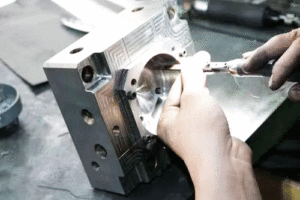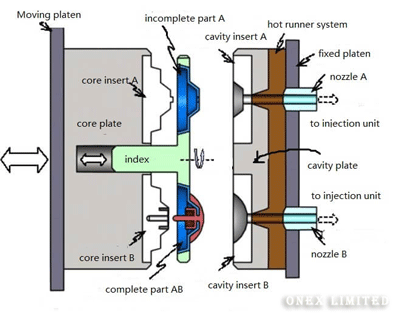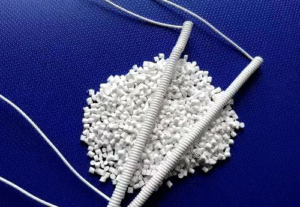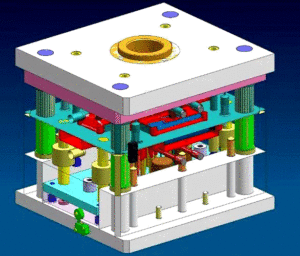
Polishing Treatment for Plastic Molds
Polishing Treatment for Plastic Molds With the widespread application of plastic products, such as daily-use items and beverage packaging containers, there is often a requirement
Over injection molding, like co-injection molding, bicolor injection molding and sandwich injection molding, belongs to multi-material injection molding technology. The basic idea of multi-material injection molding is to combine two or more materials with different characteristics to increase product value. The first injected material is called the base material or substrate. And the second type of injected material is called the covering material.
In this process, the covering material is injected above, below, around or inside the substrate to form a complete part. This process can be completed by multiple injection molding or insert injection molding. The covering material usually used is elastic resin.
If the structure of the covering material allows, multiple injection molding is a good method to process medical devices. This technology requires a special injection molding machine equipped with multiple barrels, so that the gate can injects different resins into an injection mold. We should place the barrels side by side or in an L shape. Besides, inject the resin into the mold from one or more injection points.
When using the same injection point, it is called co-molding. And the composite part produced is the core resin material overlapped by the outer layer.
When using multiple injection points, it is called over-injection. One material is molded on top of another material to produce a multilayer structure.
But the multiple injection is not suitable for all products. In the secondary injection molding, must move the slider or move the mold core to another cavity. Another method is to send the mold core to another injection molding machine.
In order to achieve complete coverage, remove the substrate from the original mold cavity, adding another mold core and mold cavity to inject the cover material.
In this process, another mold should be running on the same or another injection molding machine of a different size (depending on the size of the injection molded part). Generally, the substrate is much larger than the covering material. Besides, it may need preheating to bring the surface temperature close to the melting point of the covering material. It is to obtain the best bond strength.

Over-injection is sometimes called in-mold assembly, because the two materials are finally completely combined and a layered structure is created. This technology can be adopted for both separate components and component materials. It’s crucial to make sure substrate and the covering material achieve the required mechanical or chemical bond strengths.
Generally speaking, to strengthen the adhesion, the melting temperature of the covering material resin should be the same as that of the base material. If the melting temperature of the covering material is too low, it can’t melt the surface of the substrate. Then, it will lead to a weak bond betweem the two. However, if the melting temperature is too high, the base material will be softened and deformed. In severe cases, the covering material will penetrate the base material and result in processing failure of parts. Therefore, we should select the matching materials to ensure good adhesion.
Generally speaking, the matching material should have similar chemical properties or contain a matching composite material. When the substrate doesn’t match the covering material, it usually can only form a mechanical interlocking effect instead of a chemical bond.
The injection molding machine must keep the injection molding consistency. In addition, the ratio of the injection volume of the injection molding machine barrel to the size of the injection molded part is also an important factor affecting the quality of injection molding. This ratio is critical for all injection molding operations, especially for over injection molding.
The non-reverse device can separate the covering material like a sluice. It is easier to operate the non-reverse device when the over-molded material are metal. While it is more difficult to operate if it is a metal substrate and elastic plastic.

Polishing Treatment for Plastic Molds With the widespread application of plastic products, such as daily-use items and beverage packaging containers, there is often a requirement

Injection Molding Techniques for TPE and TPR Injection Molding Techniques for TPE and TPR 1. Dry the TPE and TPR material before injection molding It

Winter Maintenance Measures for Injection Molding Machines As winter approaches and temperatures gradually drop, a cold chill envelops the earth. While ensuring personal warmth, it

Assessment Regulations for Mold Trial Exceeding 3 Times Assessment Regulations for Mold Trial 1. Purpose The purpose of this regulation is to standardize the work of